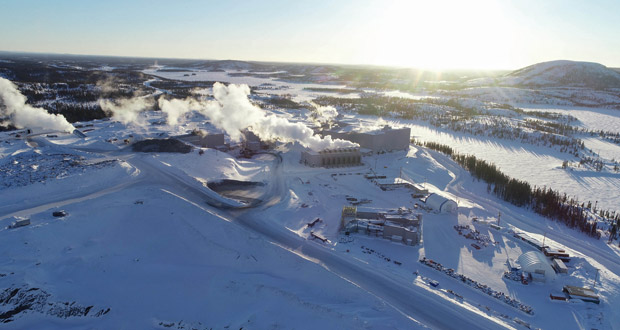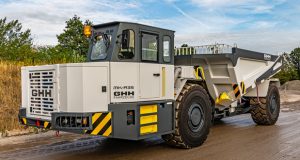Stornoway Diamonds is a leading Canadian diamond exploration and producing company. It owns and operates the Renard Mine (Figure 1), in commercial production operation since 2017. It is the first diamond mine in Québec and one of six in Canada. Renard Mine started with an open-pit mine and subsequently opened an underground mine.
The conditions of the mine presented Stornoway Diamonds with particular challenges that required an innovative approach: “Due to the geology of our ore, meaning we produce very high yield, we have lots of material that we need to sort through. At times, we have the possibility of losing some of those very expensive diamonds due to inefficiencies,” explains Marie-Claude Hallé, Marketing Operations Manager for Stornoway Diamonds. In addition, “our ore body at the Renard mine contains a high level of internal and external dilution called country rock, a significant issue for us, as it can make up to 30 to 40 % of the feed to the plant. With that come very high energy costs from crushing all this waste material that is not diamond bearing. It causes a tremendous amount of wear and tear on our equipment from screening conveyors, diamond recovery equipment, and on a dollar-per-tonne basis we spend a lot of money processing non-diamond bearing material.”
Stornoway Diamonds needed to find a way to reduce its costs and optimise its operation, and they are fully satisfied with the solution provided by TOMRA Sorting Mining, Langenfeld/Germany: “You have to really envision that TOMRA has actually changed the game in terms rough diamond recovered around the world, and allowed producers to access large exceptional quality goods that perhaps in the past would be crushed to pieces,” states Hallé.
TOMRA analyzed the situation and worked closely with Stornoway Diamond’s team to design and install a Kimberlite pre-concentration plant. The specific conditions at the Renard mine meant that the traditional Dense Media Separation method could not provide an efficient and cost-effective solution. It required innovative approach, which TOMRA delivered, making Renard the first diamond mine to incorporate ore sorting into its processing plant.
TOMRA addressed the mine’s recovery issue with its industry-leading sorting technologies, developing a solution with four key objectives for the ore sorting plant: minimize diamond breakage by removing hard rocks from the crushing plant feed; upgrade the quality of the material to the process plant by increasing the proportion of Kimberlite to waste rock; reduce the energy required for crushing by removing the harder rocks; and improve circuit efficiencies throughout the plant.
TOMRA’s solution features five PRO Near Infrared (NIR) sorters in its ore sorting circuit. This technology is particularly well suited to enable discrimination between the various ore and waste materials that need separation at the Renard mine, based on their different chemical composition.
TOMRA also included in a COM XRT 2400 sorter, which uses X-Ray Transmission (XRT) technology to separate material according to its specific atomic density, in the plant’s large diamond recovery circuit.
“The TOMRA solution we have in operation has offered us a very low-cost, efficient reliable means of recovering our coarse diamonds without inefficiency, without causing diamond breakage,” comments Hallé. “It’s a very neat way to get those diamonds out of the Kimberlite at the very early stage of the process. We reduce our power consumption cost, we reduce our wear and tear on material. We are still optimising this unit, and we feel there are even more benefits to come in terms of how it helps enhancing the overall recovery of our diamonds.”
Geoffrey Madderson, Diamond Segment Manager at TOMRA concludes: “The implementation of this plant proves that TOMRA waste sorting technology can successfully be used to upgrade lower grade ROM and that Sensor-based Sorting can be used to further improve value recovery for our clients on lower-grade resources.”
The integration of the ore sorting plant into the main processing plant was completed smoothly, with TOMRA’s full involvement in the ore sorting plant design. TOMRA also had a team onsite for the first three months of operation to ensure a seamless transition, and will continue to provide ongoing support for the entire life of the equipment.
Further information:
TOMRA Sorting Mining
www.tomra.com/mining



